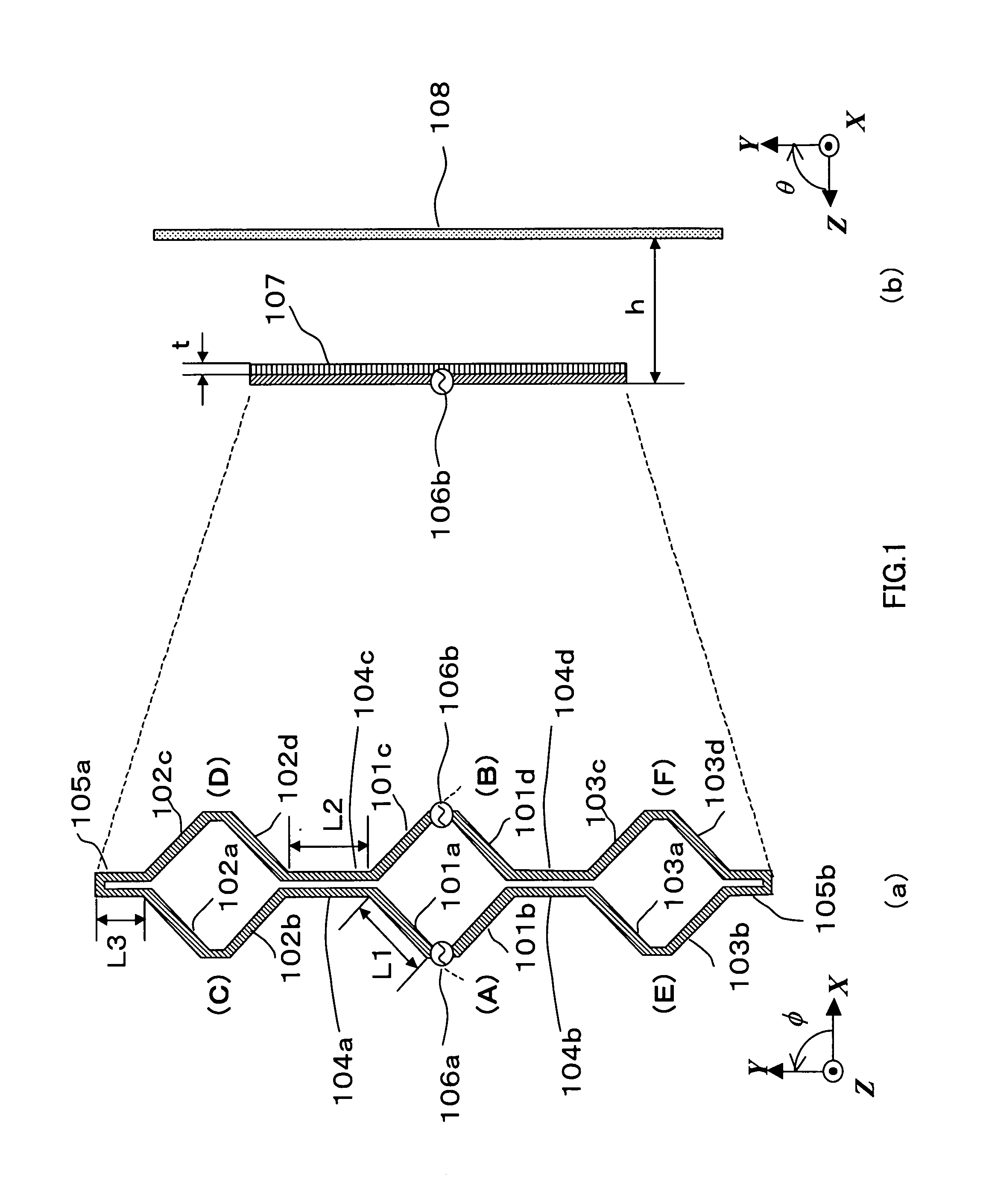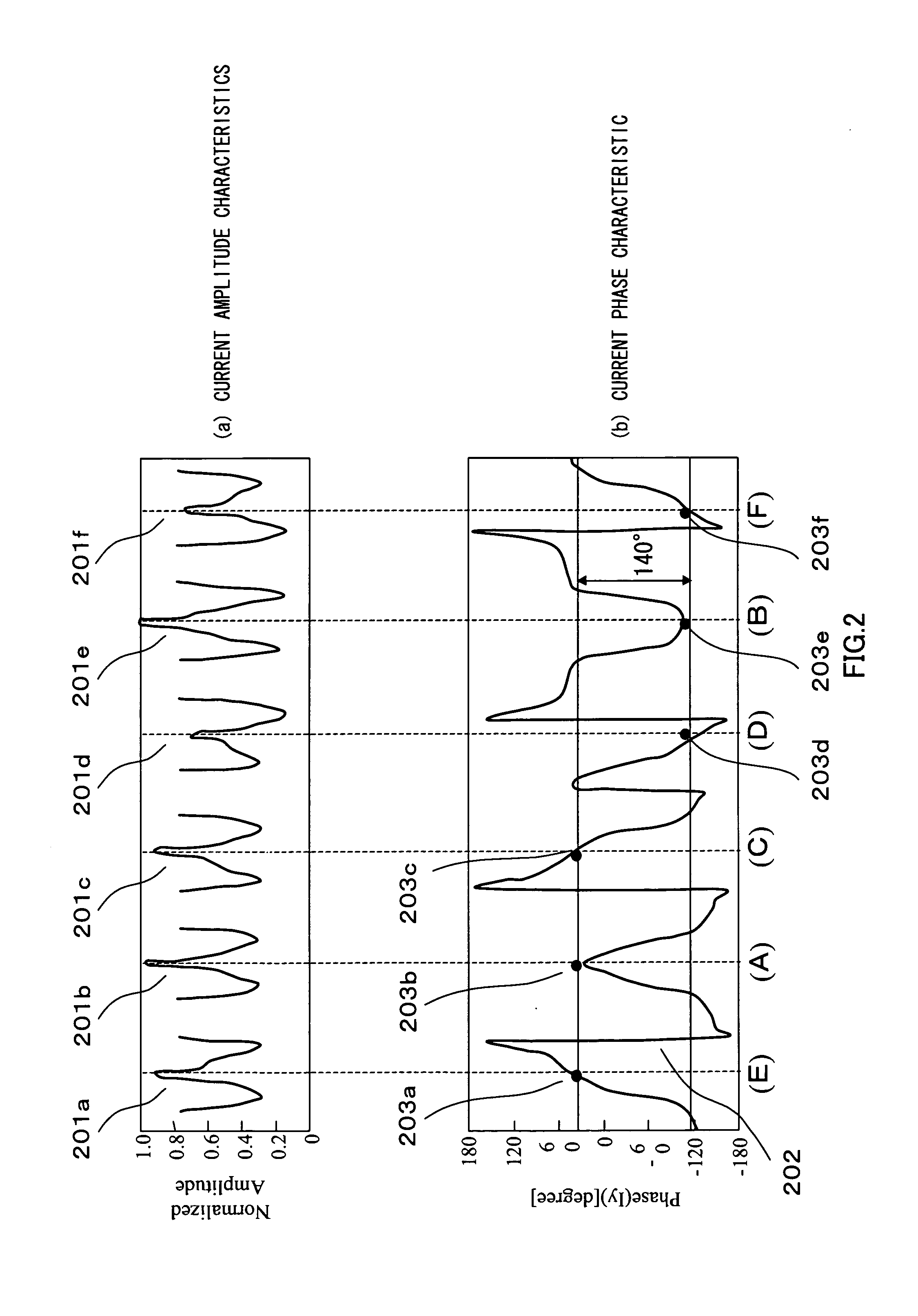Antenna Apparatus
a planar antenna and antenna technology, applied in loop antennas, non-resonant long antennas, rhombic antennas, etc., can solve the problems of degrading transmission quality and ignoring road reflection, and achieve the effect of high gain
- Summary
- Abstract
- Description
- Claims
- Application Information
AI Technical Summary
Benefits of technology
Problems solved by technology
Method used
Image
Examples
embodiment 1
[0037]FIG. 1 is a drawing showing the configuration of an antenna apparatus according to Embodiment 1 of the present invention. Below, a case will be described in which an antenna is created on a dielectric substrate of, for example, ∈r=2.26, assuming that its operating frequency is 25 GHz and one wavelength (one effective wavelength) is 8.6 mm. The coordinate axes shown in FIG. 1 are defined for convenience of explanation.
[0038]FIG. 1(a) is a planar view showing the configuration of an antenna apparatus according to Embodiment 1 of the present invention. In this figure, linear elements 101a through 101d, 102a through 102d, and 103a through 103d are electrical conductors with element length L1 of approximately ⅓ wavelength (2.8 mm), and an element width of, for example, 0.2 mm. These linear elements 101a through 101d, 102a through 102d, and 103a through 103d are arranged in square shapes as shown in FIG. 1(a).
[0039] Linear linking elements 104a through 104d are electrical conducto...
embodiment 2
[0058]FIG. 5 is a drawing showing the configuration of an antenna apparatus according to Embodiment 2 of the present invention. FIG. 5(a) is a planar view showing the configuration of the antenna apparatus, and FIG. 5(b) is an arrow view showing the configuration of the antenna apparatus viewed from the +X side of FIG. 5(a). In these figures, parts common to FIG. 1 are assigned the same reference numerals as in FIG. 1 without further explanations. Below, a case will be described in which an antenna is created on a dielectric substrate of, for example, ∈r=2.26, assuming that its operating frequency is 25 GHz and one wavelength (one effective wavelength) is 8.6 mm. The coordinate axes shown in the figures are defined for convenience of explanation.
[0059] Feed point 501a is provided between linear elements 102a and 102b, and feed point 501b is provided between linear elements 102c and 102d. Linear elements 101a and 101b, linear elements 101c and 101d, linear elements 103a and 103b, an...
embodiment 3
[0070]FIG. 9 is a drawing showing the configuration of an antenna apparatus according to Embodiment 3 of the present invention. FIG. 9(a) is a planar view showing the configuration of the antenna apparatus, in which feed points 901a, 901b, 902a, 902b, 903a and 903b are provided at the peaks opposite to the respective rhombic antenna sections, and the feed points are switched. FIG. 9(b) is an arrow view showing the configuration of the antenna apparatus viewed from the +X side of FIG. 9(a). In these figures, parts common to FIG. 1 are assigned the same reference numerals as in FIG. 1 without further explanations. Below, a case will be described in which an antenna is created on a dielectric substrate of, for example, ∈r=2.26, assuming that its operating frequency is 25 GHz and one wavelength (one effective wavelength) is 8.6 mm. The coordinate axes shown in the figures are defined for convenience of explanation.
[0071] An example of feed point switching according to an antenna appara...
PUM
 Login to View More
Login to View More Abstract
Description
Claims
Application Information
 Login to View More
Login to View More - R&D
- Intellectual Property
- Life Sciences
- Materials
- Tech Scout
- Unparalleled Data Quality
- Higher Quality Content
- 60% Fewer Hallucinations
Browse by: Latest US Patents, China's latest patents, Technical Efficacy Thesaurus, Application Domain, Technology Topic, Popular Technical Reports.
© 2025 PatSnap. All rights reserved.Legal|Privacy policy|Modern Slavery Act Transparency Statement|Sitemap|About US| Contact US: help@patsnap.com



